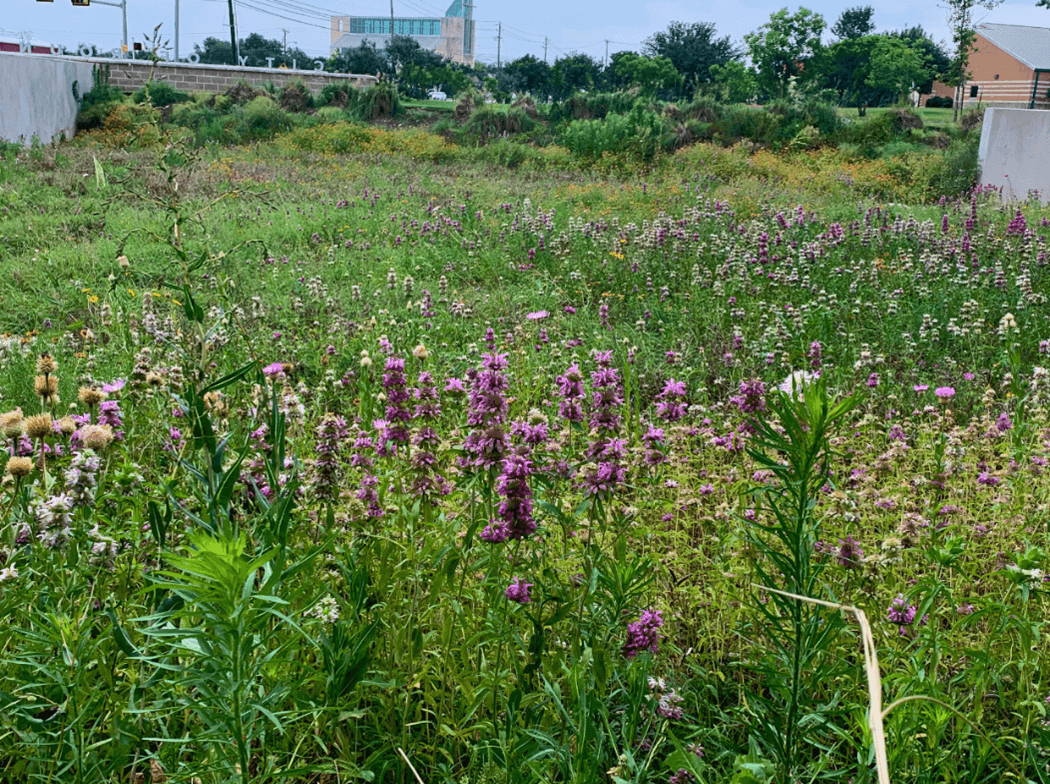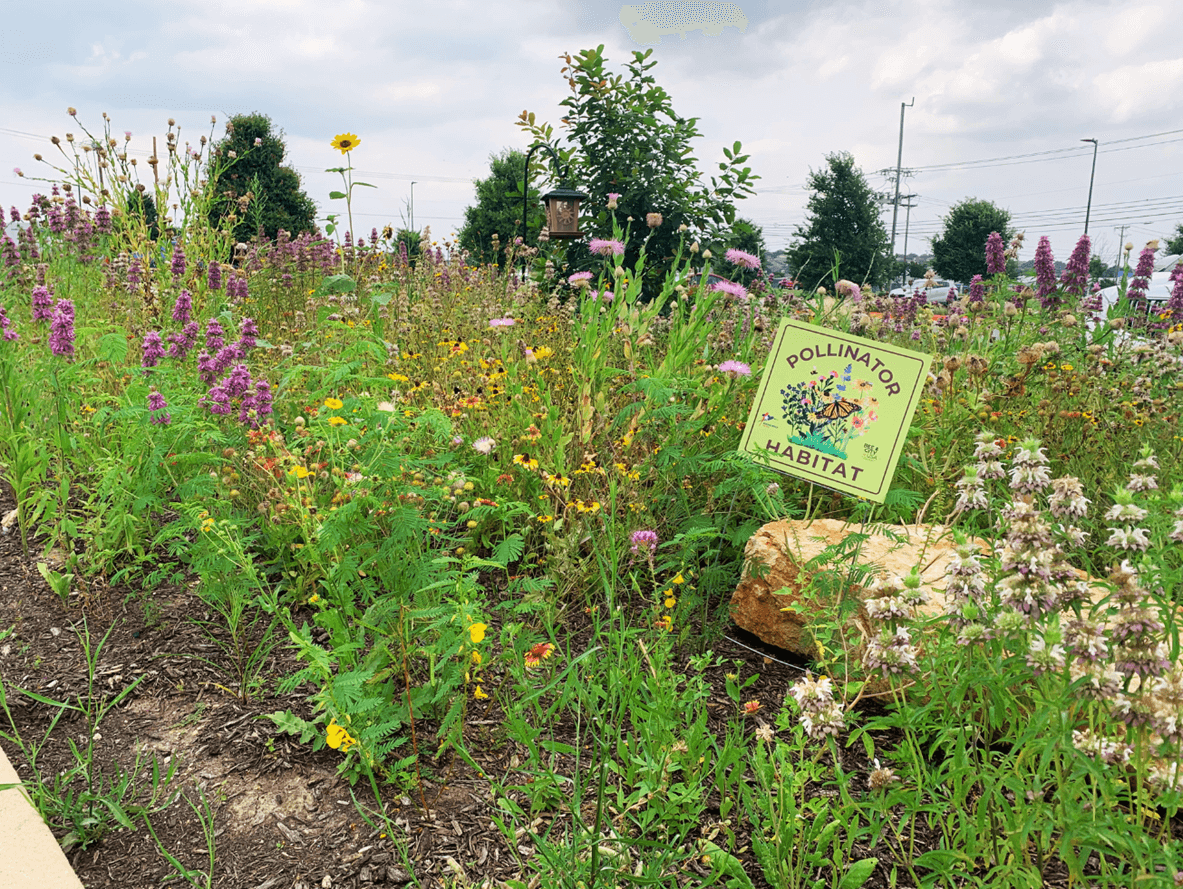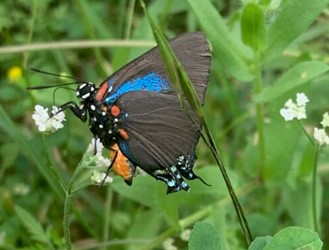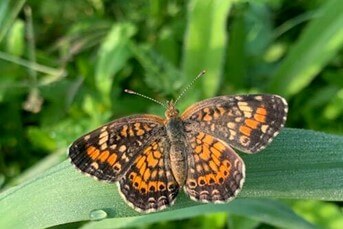Over the past two years, we have been changing the landscape at our City Utilities and Transportation building by adding native and adapted plants. Conservation staff encourage native landscaping to our residents, so we decided to practice what we preach and began transforming our landscaping. Native landscaping uses plants that naturally occur in this ecoregion and have adapted to withstand high temperatures and drought. This means that sprinkler usage is not needed very often, to keep them alive. When planting, we water by hand for about 2 weeks, using water from our rainwater harvesting tank. This mild and rainy spring has helped our plants get established, so we hope we won’t need to use the sprinkler system in these areas.
Though this building is relatively new (built in 2019), many of the original plants died off in the winter storm of 2021 or just did not survive the drought. Several of the landscaping beds were bare, which gave us an opportunity to start planting! In 2022, we replaced dead Crape Myrtles with Possomhaw Holly and some ornamental bushes with Texas Sage. A few bare spots were filled in with plants from the Go n Grow native plant sale we hosted in spring 2023. These included Salvia Greggi, Sage, Lantana, Fall Aster, Gregg’s Mistflower, and more! We filled two large parking lot islands with Texas native wildflower seeds in the fall of 2023. We also laid wildflower seeds in our stormwater retention pond to turn it into a wildflower field. City Stormwater Operations staff have also helped rescue plants in easements and stormwater channels that were about to be mowed. Some of these plants, including Lantana, Prairie Verbena, and Mock Vervain, were planted at our office building.

In 2024, a city employee began volunteering with the Native Plant Society of Texas, who donated some plants from native plant rescues for our project. The Native Plant Rescue Project of Williamson County rescues plants and seeds in areas that are about to be developed and sends them to conservation agencies, local native plant growers, community pollinator gardens, and other habitat-building projects. They have rescued over 250 native species, including several Species of Greatest Conservation Need.
Conservation staff also began volunteering with the plant rescues to collect unique plants for our landscaping project. Some notable plants from these rescues include Blue-Eyed Grass, Barbara’s Buttons, Blazing Star, Yuccas, Green Milkweed, and Berlandier’s Yellow Flax. These plants are special because they aren’t really found in plant nurseries. Most importantly, these plants have evolved and adapted to the local environment and are host plants for beneficial insects and pollinators.

Speaking of pollinators, our native landscaping project has increased the number of pollinators and insects at this property! We are happy to provide habitat for pollinators and insects, especially because the City of Round Rock is a Bee City affiliate! Bee City USA provides a framework for communities to come together to conserve native pollinators by providing them with a healthy habitat that is rich in a variety of native plants, provides nesting sites, and is protected from pesticides.


Future Plans
We want to continue adding more native plants to our building’s landscape. Ideally, city facilities will become demonstration sites for “non-traditional” landscapes. Our main goals are to remove some of the turfgrass areas and replace them with native prairie grasses. Though these grass areas do have automatic irrigation, it isn’t typically used until mid-or late summer, but it will save a lot more water if we never irrigate the grass! Prairie grasses would provide so many benefits to the local ecosystem as well. We also would like to add interpretive signage around our landscaping and rainwater collection areas. It would be great for the public to see and get ideas for their own landscaping projects.

